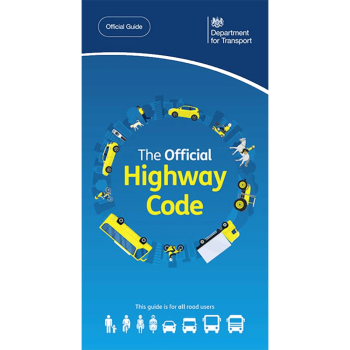________________________________________
Driver testing services: step 4 of the roadmap
Following the government’s announcement setting out plans to move to step 4 of the roadmap in England on 19 July, we want to explain what these changes mean to driver testing services in England and how these will affect you and your pupils.
Driving lessons: keeping yourself and others safe
There is still a risk you could catch or pass on the virus, even if you are fully vaccinated.
You are encouraged to exercise caution and consider the risks.
While no situation is risk free, there are actions we can take to protect ourselves and others around us.
Wearing a face covering
COVID-19 spreads through the air by droplets and aerosols that are exhaled from the nose and mouth of an infected person.
The government expects and recommends that people wear face coverings in enclosed spaces.
So we still recommend you and your pupils wearing a face covering during a driving lesson.
Fresh air
When a person infected with COVID-19 coughs, talks or breathes, they release droplets and aerosols which can be breathed in by another person. Fresh air blows away these particles, reducing the chances of COVID-19 spreading.
The more fresh air you let into your vehicle, the less likely a person is to inhale infectious particles.
________________________________________
Driving tests
Taking rapid lateral flow tests
From 19 July, we will continue to encourage your pupils to take a rapid lateral flow test in the 48 hours before their driving test
Face coverings
From 19 July we will continue to expect you and your pupils to wear a face covering when you come for driving tests,unless you or your pupil have a good reason not to, such as:
• having a physical or mental illness or impairment, or a disability that means you cannot put on, wear or remove a face covering
• putting on, wearing or removing a face covering would cause you severe distress
Your pupil must tell us if they have a good reason not to wear a face covering when they book their test –
if you have made the booking on behalf of your pupil you will need to do this if required.
Your pupil’s test will not take place without a face covering if they do not tell us ahead of their test.
If your pupil makes a dangerous or serious fault on test
From 19 July if your pupil makes a serious or dangerous fault, which means they’ve failed their test, the driving examiner will still direct them back to the driving test centre, where the test will end.
This is to minimise the amount of time they need to spend in the vehicle.
We will keep this measure under review.
Car cleanliness and fresh air
The car used for the test must have at least one window open on each side throughout the test.
Any combination of windows can be opened. Your pupils should wear clothing suitable for the weather.
Allowing instructors to sit in on driving tests
As part of our measures, we stopped allowing you to sit in on driving tests.
As social distancing measures are relaxed on 19 July, we'll review this measure and consider when you will be able to safely sit in on driving tests again.
We will let know as soon as there is an update on this.
Test centre waiting rooms
In general, the risk of catching or passing on COVID-19 is higher:
• in crowded spaces, where there are more people who might be infectious
• in enclosed indoor spaces where there is limited fresh air
We encourage you to keep your distance and wear face coverings in our waiting areas to help reduce the spread of the virus.
Some of our waiting rooms will need to remain closed because they are located in:
• shared buildings where the landlord is not allowing public access
• rooms with no ventilation
We will continue to work with our local facilities team and landlords at these sites and will let you know when we are in a position to reopen them.
